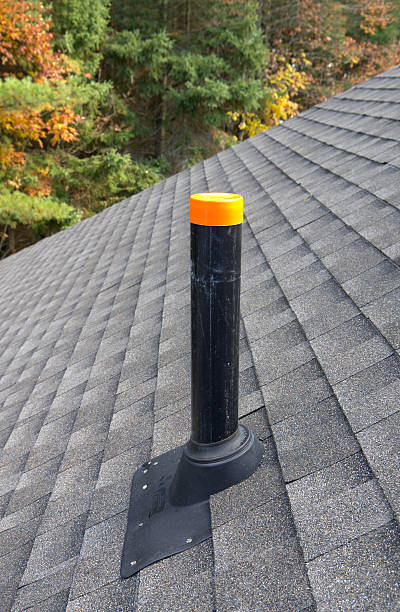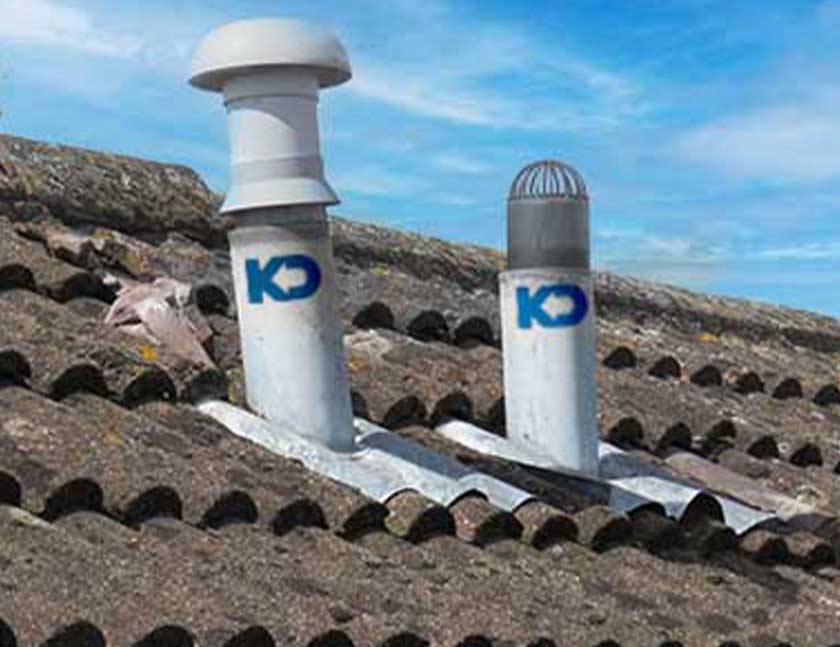The content following next in relation to What Are Plumbing Vents and Why Are They Important? is totally interesting. You should investigate it.

Appropriate air flow in pipes systems is typically overlooked, yet it is vital for maintaining the capability and safety of your home's plumbing. Ventilation assists regulate atmospheric pressure, avoid the accumulation of hazardous gases, and make certain the efficient removal of waste. In this guide, we will certainly discover the significance of proper plumbing ventilation, how it works, and the benefits it gives your plumbing system.
Comprehending Ventilation in Plumbing
Ventilation in plumbing describes the network of pipes that allow air to move via the water drainage system. These vents offer several functions, including regulating atmospheric pressure within the pipelines, stopping drain gases from entering the home, and helping in the smooth flow of wastewater.
Exactly How Ventilation Works in Pipes Solutions
Air Pressure Law
Appropriate ventilation keeps balanced atmospheric pressure within the pipes system. When water streams with pipes, it displaces air. Without adequate air flow, this displacement can develop negative stress, resulting in slow down drains pipes or siphoning of water from traps, which can trigger undesirable odors to leak right into the home.
Preventing Drain Gas Accumulation
Among one of the most vital features of pipes vents is to stop sewer gases, such as methane and hydrogen sulfide, from accumulating within the home. These gases can position severe health and wellness threats and are very combustible. Vent pipelines enable these gases to get away safely outside.
Aiding in Waste Removal
Ventilation assists in the efficient removal of wastewater by stopping airlocks in the drain system. When air can flow easily with the vents, it allows water and waste to flow smoothly with the pipes, lowering the threat of blockages and back-ups.
Sorts Of Pipes Vents
Key Stack Vent
The primary stack vent, also called the air vent pile, is the primary vent in a pipes system. It extends from the main drain align via the roofing, permitting gases to get away and fresh air to go into the system.
Branch Vent
Branch vents connect to the primary pile air vent and serve private components, such as sinks, toilets, and showers. These vents guarantee that each fixture has ample air flow to function effectively.
Air Admittance Valve (AAV).
An Air Admittance Valve (AAV) is a one-way valve that enables air to go into the pipes system without the demand for a typical air vent pipeline expanding via the roof covering. AAVs are generally made use of in renovations or locations where mounting a typical air vent is unwise.
Signs of Poor Air Flow in Pipes.
Slow Draining Fixtures.
If your sinks, tubs, or toilets are draining pipes slowly, maybe an indication of poor air flow. Insufficient air circulation can produce a vacuum impact, making it challenging for water to drain pipes correctly.
Gurgling Appears.
Gurgling sounds originating from drains are frequently a result of air being drawn with water traps as a result of unfavorable stress in the pipelines. This is a clear sign of not enough air flow.
Undesirable Odors.
Drain odors inside your home are a red flag that your pipes system is not appropriately aerated. This can imply that drain gases are not being properly vented outside, causing possibly harmful problems.
Usual Air Flow Blunders.
Poor Vent Sizing.
Making use of small vent pipes can result in poor air circulation and stress imbalances in the system. It's necessary to utilize vents that fulfill the details needs of your plumbing system.
Improper Vent Positioning.
Putting vents too much from the fixtures they offer can minimize their effectiveness. Correct placement makes certain that air can stream openly and successfully via the system.
Disregarding Code Needs.
Building codes provide details standards for plumbing air flow. Disregarding these codes can lead to a system that fails to operate appropriately and may lead to pricey repair work or health hazards.
Benefits of Correct Ventilation.
Enhanced System Efficiency.
Correctly aerated plumbing systems operate a lot more effectively, with less blockages, faster draining pipes, and less strain on the pipelines. This performance extends the lifespan of the plumbing system.
Improved Air Quality.
By avoiding drain gases from entering your home, appropriate ventilation contributes to better interior air top quality, making your living atmosphere healthier and more comfortable.
Protecting Against Water Damages.
Appropriate air flow helps avoid water from being siphoned out of traps, which can cause sewer gases going into the home and causing water damages gradually.
Actions to Make Sure Proper Ventilation.
Consulting Plumbing Codes.
Constantly speak with neighborhood pipes codes when making or changing your plumbing system. These codes provide the required guidelines for correct venting and ensure your system satisfies security criteria.
Normal Evaluation and Upkeep.
Regular assessments can help identify possible air flow problems before they end up being significant troubles. Upkeep tasks, such as cleaning vent pipes and checking for obstructions, are important for keeping the system in good working order.
Specialist Setup.
For brand-new setups or major alterations, it's a good idea to employ a specialist plumbing. They have the expertise to ensure the ventilation system is correctly developed and installed according to code.
Final thought.
Proper air flow is a crucial part of any kind of plumbing system, making sure that it operates effectively and securely. By understanding the value of air flow, recognizing the indications of inadequate air flow, and taking steps to maintain your system, you can stop pricey issues and safeguard your home's air high quality.
4 Things You Should Know About Your Plumbing Vents
What Plumbing Vents Are
Also called a vent stack, a plumbing vent is a vertical pipe attached to your drain line that runs through your roof. The plumbing vent pipe, or plumbing air vent, removes gas and odors from your plumbing system and allows fresh air to enter the pipes, helping the water to flow out of the drain pipes.
What Plumbing Vents Do
Plumbing vents have two basic functions. One of which is to allow unpleasant smelling wastewater and sewer gasses to escape your plumbing system instead of entering your home. Plumbing vent pipes are typically located on roofs, away from windows, to ensure the fumes exit the home completely.
The other function of the plumbing vent is to move fresh air into your plumbing system. This helps move water through every plumbing fixture in your house, like toilets and sink drains. Think of the way in which you need to let a little air into the bottle as you pour soda in order to make the drink flow smoothly.
Different Types of Plumbing Vents
True vent: This is the most common vent option. In simplest terms, a true vent is a vertical pipe attached to your drain line that exits through the roof. They often function as the main vent that other fixtures can connect to. Re-vent pipe or auxiliary vent: Attached to the drain line near specific plumbing fixtures, re-vent pipes run up and over to connect to the main vent. Common vent: Two plumbing fixtures installed on opposite sides of a wall are typically tied into the vent stack using something known as a sanitary cross. Wet vent: This venting option operates as a drain pipe and a vent at the same time. Wet vent drainage systems drain water from one fixture while venting the air from another. Although they’ve been used for over 100 years, wet vent systems have only recently been added to the plumbing code in many areas. If you’re planning on installing one in a bathroom remodel, make sure you check your local code prior to construction. Loop vent: For free-standing fixtures like kitchen island sinks, loop vents are ideal. These vent pipes run under the floor, rise from the P-trap, and create a loop inside the cabinet sink. Air admittance valve: An AAV is a one-way mechanical valve typically installed at the site of the plumbing fixture. AAVs allow venting to occur without having to tie into a larger venting system. They’re ideal for venting fixtures where you aren’t able to easily connect to an existing vent system. Common Plumbing Vent Issues
Although vent pipes typically don’t have water flowing through them, they’re still subject to many typical plumbing issues. For example, clogs are one of the most common problems associated with sewer vent pipes. If your vent pipe gets clogged, all of your plumbing fixtures tied into the vent stack will be affected.
A sink with a slow drain that bubbles and gurgles or a strong sewage smell around your toilet are both indicators that your toilet vent pipe is clogged. Because most vent pipes exit through the roof, old leaves, twigs or even a bird’s nest could be clogging the pipe.
Clogs in your vent pipe system cause a buildup of negative pressure, meaning that water won’t be able to flow out of your home very well. It’s similar to putting your finger over the opening of a straw to trap water inside. When you remove your finger, the water is able to flow out of the straw.
If you suspect you have any blockage in your vent, make sure you have a professional come examine the situation. Left unchecked, a blocked air vent can lead to other costly repairs, like leaks and sediment buildup.
Under Pressure
Pipe vents are essential aspects of a home’s plumbing system. Owning a home means learning about all sorts of things you never put much thought into before. But by understanding as much as you can about the important systems of your home, you can keep those budgets intact and those anxiety levels low.
https://www.homeserve.com/en-us/blog/home-improvement/plumbing-vents/

Do you appreciate more info about The Upsides of Proper Ventilation in Plumbing Design? Put feedback below. We'd be happy to hear your ideas about this blog post. We are looking forward to see you back again in the near future. Kindly take a moment to distribute this blog post if you liked it. Thank you so much for your time invested reading it.
Pricing